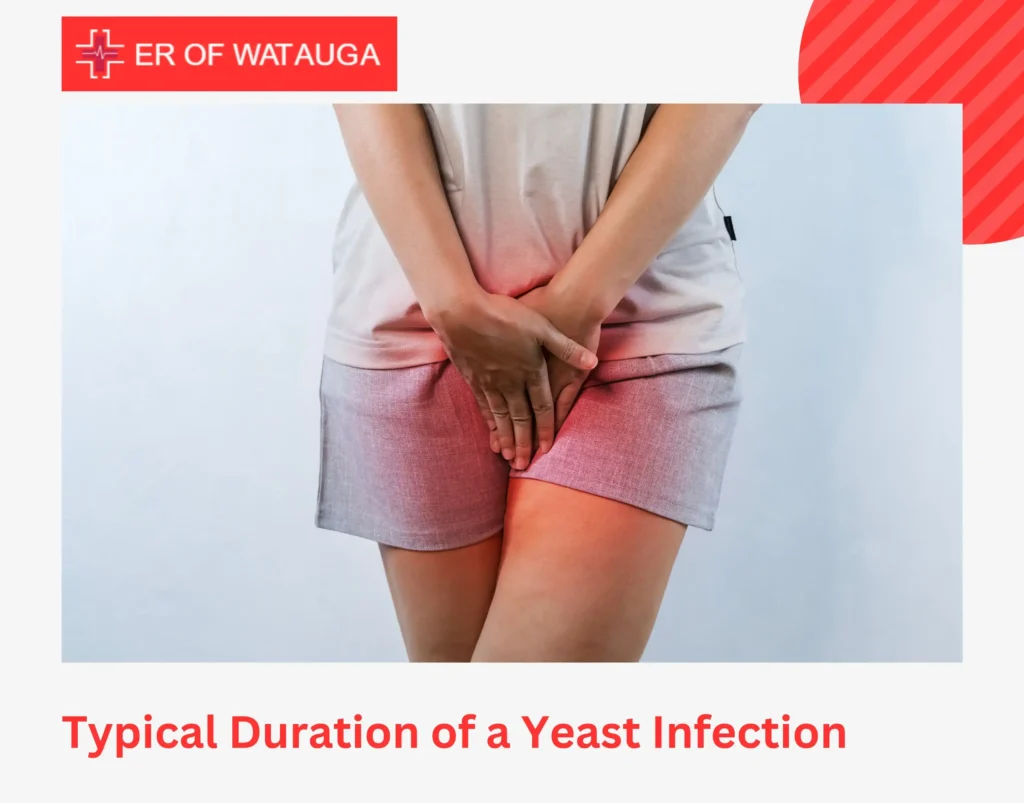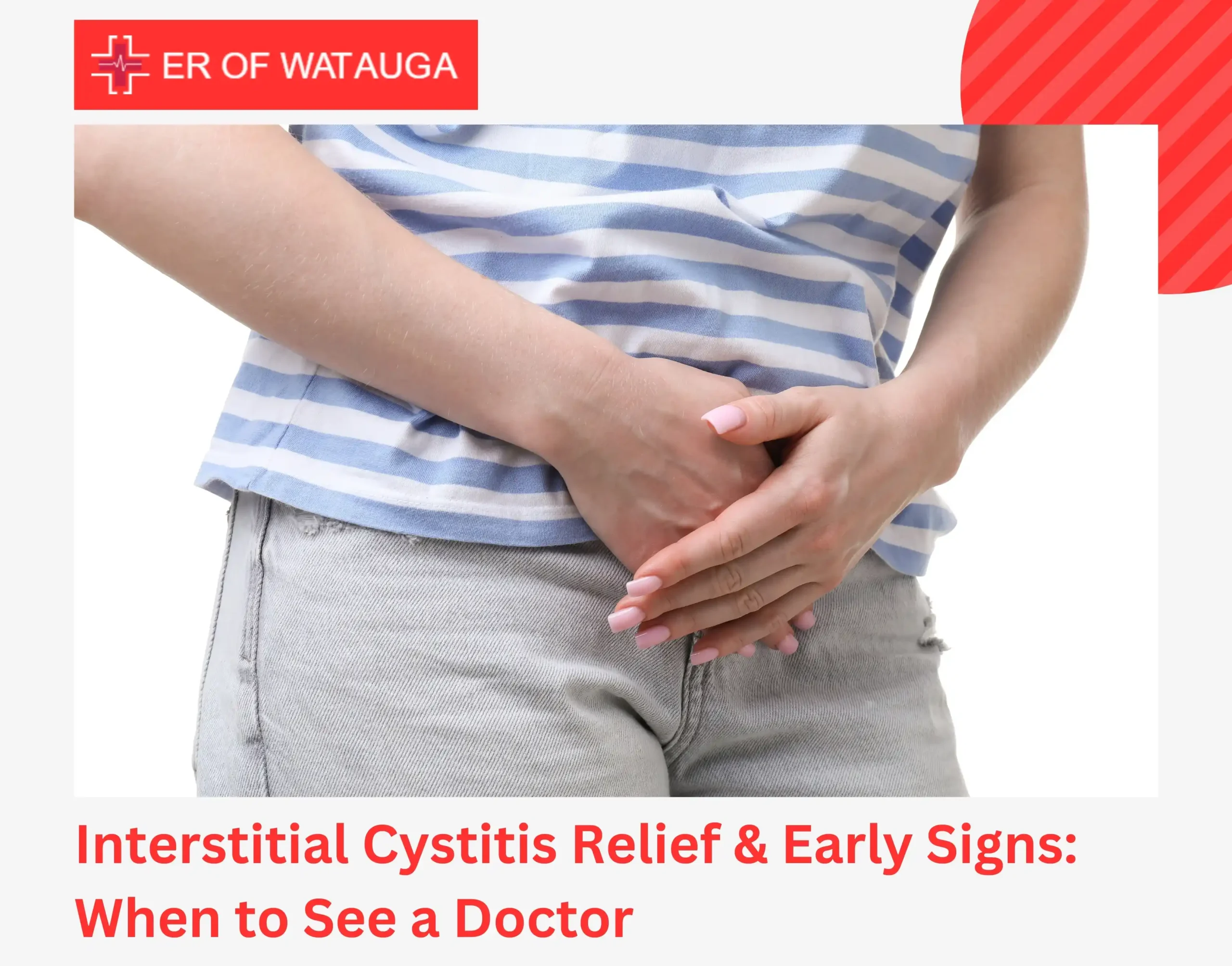Yeast infections affect millions of people, but recovery timelines vary widely depending on severity and treatment approach. Most cases resolve within a week with standard antifungal remedies, but certain warning signs require immediate emergency care.
Let’s break down why your yeast infection could last longer or go away faster.
Typical Duration of a Yeast Infection
Most yeast infections clear within 3-10 days with proper antifungal treatment. Topical creams, ointments, and oral medications effectively target the infection while relieving itching, soreness, and discomfort. However, it’s essential to remember that timelines can vary. Here’s a breakdown of how long does a yeast infection last:
- Mild Yeast Infections: They can resolve within 3-7 days after treatment. You can take your prescribed medications during the healing period or any antifungal injections or creams to facilitate the recovery process.
- Moderate to Severe Yeast Infections: Yeast infections with moderate to severe symptoms are accompanied by stronger discomfort and pain, which usually extends the treatment to more than 2 weeks. Severe ones, on the other hand, may persist longer and need more extended or repeated yeast infection treatment courses.
- Complicated vaginal infection timeline: Affecting pregnant women, diabetics, or those with compromised immune systems may take 2-4 weeks to fully resolve and require specialized treatment protocols.
Recovery depends on infection severity, your immune response, and treatment adherence. Always complete the full medication course even after vaginal itching and discharge improve. Incomplete treatment allows yeast to regrow and cause reinfection.
When to Seek Emergency Care For Yeast Infections
Get immediately medical attention immediately if you have:
- Fever (100.4°F or higher) with yeast infection symptoms
- Severe abdominal or pelvic pain
- Difficulty breathing or shortness of breath
- Rapid heartbeat with infection symptoms
- Confusion or altered mental state
- Severe nausea and vomiting
- Signs of dehydration (dizziness, dry mouth, reduced urination)
These symptoms can indicate invasive candidiasis; a bloodstream infection with 30-40% mortality rates if untreated. Emergency physicians diagnose this through blood cultures and begin immediate antifungal remedies.
Factors That Can Affect How Long Your Infection Lasts
If you’re feeling that your yeast infection is taking longer than expected to go away, then the following factors may influence how soon you start feeling better:
- 1. Use of Antibiotics: If you’ve taken antibiotics recently, they may interfere with your body’s balance and sometimes make it harder for the body to resolve the yeast infection quickly.
- Existing Health Issues: Health problems, such as diabetes or another autoimmune disease, could result in prolonging the duration of the infection. Usually, your body fights with the infection fast, but with pre-existing issues, it struggles more.
- Change in Hormones: During pregnancy, you can experience fluctuating or increasing hormonal levels. Additionally, during the menstrual cycle or when using hormonal contraception, infections may take longer than usual to heal, thereby slowing down the resolution process.
- Delayed or Incorrect Treatment: Failing to take the correct approach to yeast infection treatment or delaying the start of treatment may cause the infection to worsen, thereby extending the recovery period.
- Lifestyle and Clothing: Wearing clothing that is both tight-fitting and made of synthetic materials creates a warm and moist environment, making it more challenging to eliminate yeast infections and thereby prolonging the infection.
How to Tell If a Yeast Infection Is Gone?
Here are some quick changes to confirm if your yeast infection has gone.
- Discharge: Your thick, cottage cheese-like discharge is clear and returned to normal consistency and odor.
- Itching and Burning: The severe and persistent burning and itching are markedly decreased or stopped altogether.
- Redness and Swelling: Any symptoms of redness, rash, or swelling with dermatological changes of the genital area should resolve, and the skin should appear normal and healthy.
- Odor: The unpleasant or unusual vaginal odor associated with yeast infections should be gone
Yeast Infection Treatment: 5 Home Remedies
Alongside the prescribed medications, you can treat your yeast infections at home as well. Here’s how you can do it:
1. Eat Yogurt
Yogurt contains probiotics that are highly beneficial to your body, acting as a supplement. However, you must not eat it and should not use it as a topical treatment, as it may lead to adverse effects that are not beneficial for the infection. Applying it directly to your skin offers no additional benefits, and since it contains sugar, direct application to the skin may sometimes exacerbate the symptoms of bacterial infection.
2. Rinse with Salt Water
Sometimes, a saltwater rinse can reduce yeast infections and soothe inflammatory responses around infected tissues. Add half a teaspoon of salt to a warm cup of water. For oral thrush, you may gently swish with the mixture. For the other body parts, soak the infected area for a few minutes and rinse thoroughly.
3. Apply Coconut Oil
Coconut oil has antifungal properties and can help ease infections. Gently apply a thin layer of coconut oil at the site of the yeast infection. This may help some strains of the yeast to die. Moreover, it also soothes dry, irritated, and uncomfortable skin.
4. Use Tea Tree Oil
Tea tree oil calms your skin of any inflammation, redness, or itching. You can find it in many creams, ointments, and even supplements. However, be sure not to use it in undiluted form directly on the skin, as it can counteract and lead to skin irritation. Therefore, you must dilute it with a carrier oil and apply it to the infected area.
5. Apple Cider Vinegar (ACV) Baths:
Generally, warm baths aid in relaxation, and adding a cup of diluted apple cider vinegar can help ease out irritation multiple-fold. In addition to calming the infection, ACV also normalizes the skin’s pH balance.
Understanding Yeast Infection Recovery Timeline
Yeast infections last for 3-10 days depending on your severity and symptoms. If it’s a mild infection, then it will clear within a week. But if you’re having severe symptoms, it can take longer than 3 weeks to recover and requires extended treatment. Alongside medications, home remedies like applying coconut oil and tea tree oil and taking apple cider vinegar baths can help soothe symptoms and support healing.
Frequently Asked Questions
1. Can a yeast infection go away on its own?
No, most yeast infections do not go away without treatment. While very mild cases may improve on their own, it’s uncommon and not recommended to wait it out, as untreated infections can last for weeks and cause discomfort.
2. Why did my yeast infection return after treatment?
Yeast infections can return for several reasons. For instance, when your initial infection is not fully treated, especially if the medication course wasn’t completed. Additionally, diseases can be caused by other conditions that mimic yeast infections, so it’s essential to obtain a proper diagnosis if infections persist.
3. How quickly should I feel relief after starting treatment?
You can start to feel relief within 1-3 days of starting yeast infection treatment. However, it can take up to a week or longer for the infection to completely clear. It’s essential to complete the entire treatment course, even if symptoms improve early, to ensure the infection is fully eradicated and to minimize the risk of recurrence.
4. Can a yeast infection be life-threatening?
Yes, when it spreads to the bloodstream (candidemia), it becomes a medical emergency with high mortality rates requiring immediate IV treatment.









